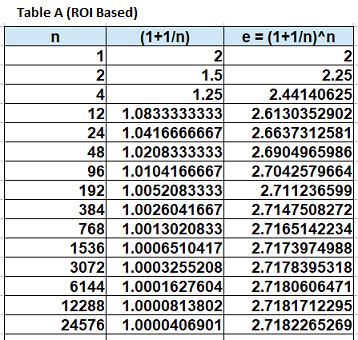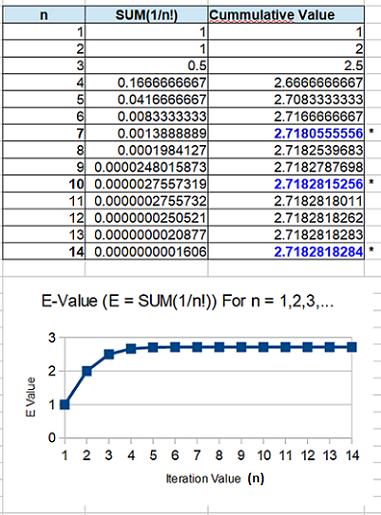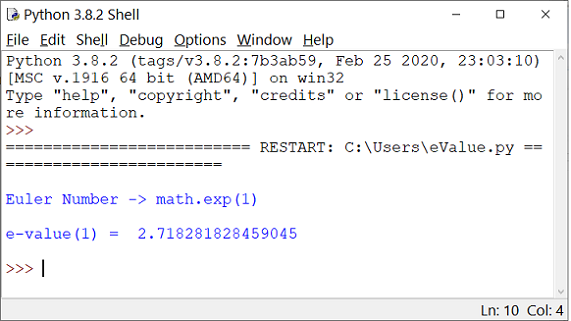| Euler Number (e) |
| We know the value of exponential constant (e) to be 2.71828 (truncated to fifth decimal place). This value of e was first computed by Swiss mathematician Jacob Bernoulli when computing ROI of single unit of 1.00 in any currency. His formulation was |
| e = (1 + 1/n)n |
| Using the limits, the above formula can be expressed as |
| e = lim (1 + 1/n)n |
| n -> ∞ |
| Bernoulli computation was that if 1.00 unit is invested at 100% APR, after a year, the value would be 2.00. If the interest was compounded bi-annually, at the end of the year, the value would be 2.25. If it was further compounded quarterly, the new value would be 2.4414, at monthly, the value would be 2.613 as shown in Table A. During his times, the computation was done manually and so after several iterations, he concluded that the value was 2.7. Using this formulation, to get the value of 2.71828, the value of n should be way higher than 24576 to get to the value of 2.71828182845904523536. |

|
| Euler used a numeric formula to compute the e value. Further Euler's computation was formulated as |
| ∞ |
| e = Σ (1/n!) = 1/0! + 1/1! + 1/2! + ..... ∞ = 2.71828182845904523536 ... |
| n = 0 |
| Using the factorial based formulation, the value of e can be computed to third decimal place at 7th iteration, sixth decimal place at 10th iteration and so on as shown in Table B. Based on the math precision of the software and computer, the e value can be computed to very high precision using the factorial formulation. |
| Table B |

|
| Using python, exp(1) can be computed to much higher precision as shown below (2.718281828459045). |

|
| Math Reference Compute Exp |
| Sigmoid Function |
| Top |